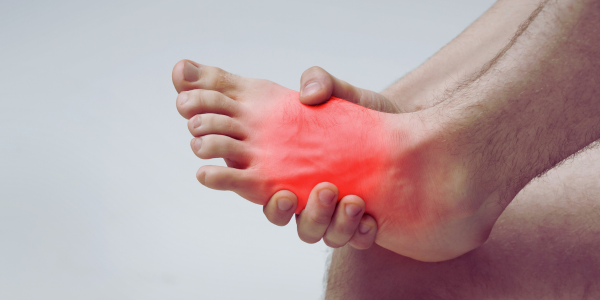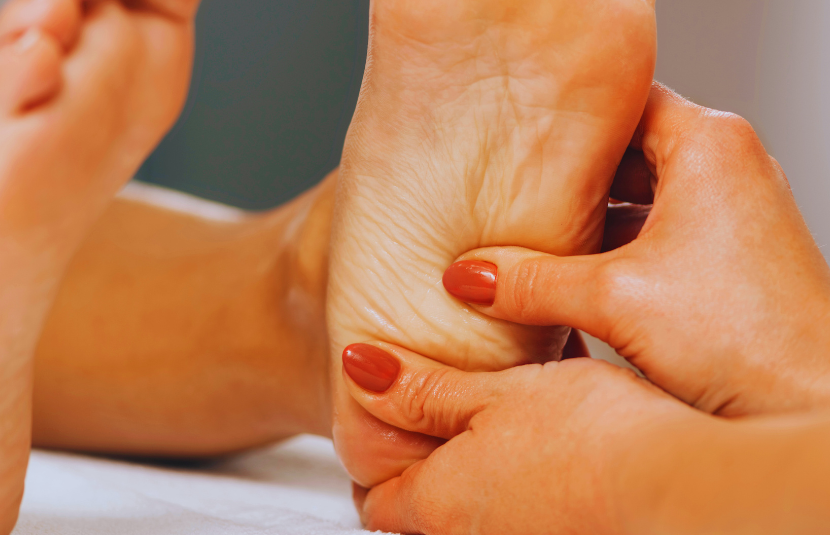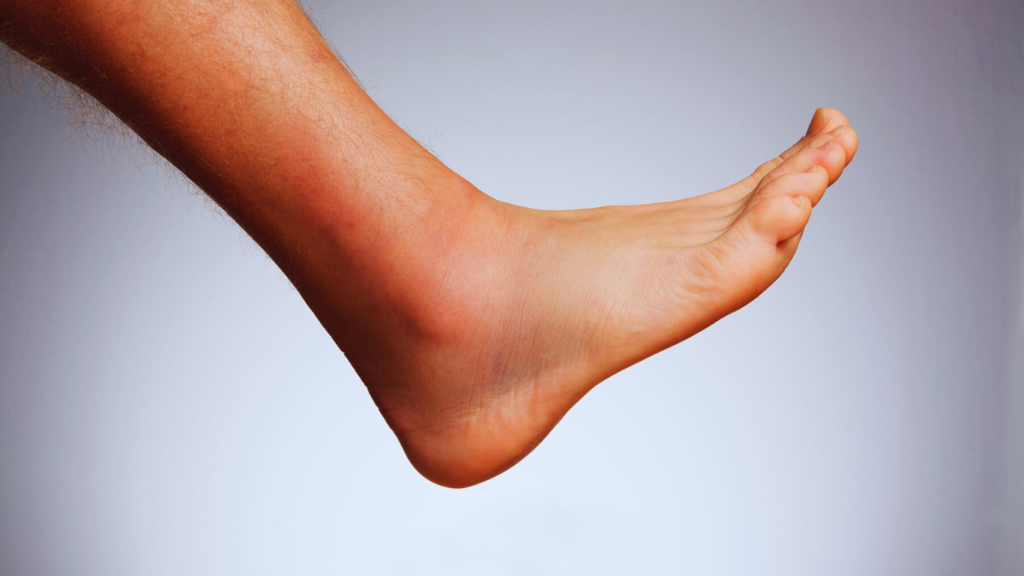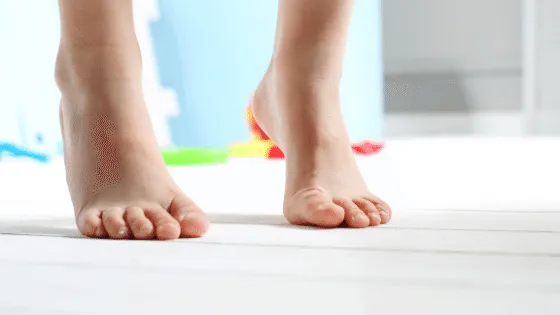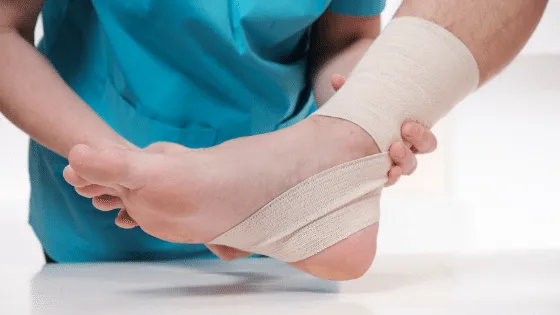Do you want to find out more about preventing and treating common running injuries? Running injuries are more common than most people think with nearly 80% of runners obtaining a running-induced injury each year. In this article, we’ll be discussing the diagnosis, anatomy, biomechanics, and treatment of three common running injuries as a part of our two-part series covering the topic.
Preventing And Treating Common Running Injuries
Common Running Injury #1 – Plantar Fasciitis
Plantar fasciitis  refers to an injury that affects the longest ligament in the human foot, a flat band of tissue that connects the heel bone to the toes – the plantar fascia. Being the most common foot injury plaguing runners, it’s crucial to understand the mechanics of how plantar fasciitis occurs. The main function of the plantar fascia is to support the arch, acting in a similar way that a cable supports a bridge; when a large truck drives over the bridge it causes tension on the cable, similarly large exertions of force cause tension on the plantar fascia. When running, you hit the ground with up to four times more force than usual, causing great stress on the plantar fascia. Pain typically occurs in the heel or arch due to the plantar fascia stretching, becoming weak, torn, swollen, irritated or inflamed. It is vital to take into account the small muscles in the foot known as the Plantar Intrinsic Muscles of Arch which assist in holding up the arch of the foot, maintaining arch integrity, and allowing for the toes to flex accordingly to the gait.
refers to an injury that affects the longest ligament in the human foot, a flat band of tissue that connects the heel bone to the toes – the plantar fascia. Being the most common foot injury plaguing runners, it’s crucial to understand the mechanics of how plantar fasciitis occurs. The main function of the plantar fascia is to support the arch, acting in a similar way that a cable supports a bridge; when a large truck drives over the bridge it causes tension on the cable, similarly large exertions of force cause tension on the plantar fascia. When running, you hit the ground with up to four times more force than usual, causing great stress on the plantar fascia. Pain typically occurs in the heel or arch due to the plantar fascia stretching, becoming weak, torn, swollen, irritated or inflamed. It is vital to take into account the small muscles in the foot known as the Plantar Intrinsic Muscles of Arch which assist in holding up the arch of the foot, maintaining arch integrity, and allowing for the toes to flex accordingly to the gait.
PREVENTION & TREATMENT
- The best method for both preventing and treating plantar fasciitis is stretching. By stretching the gastrocnemius and soleus (calf muscles) connected to the Achilles tendon, you effectively stretch the plantar fascia. For information on the plantar fascia stretch, check out our blog with tips to avoid heel pain.
- When irritation occurs after a run, icing therapy helps treat inflammation in the foot, furthermore reducing swelling.
- To prevent
 plantar fasciitis, over-the-counter or customised prescription orthoses provide added support to the foot by reducing the strain on the plantar fascia.
plantar fasciitis, over-the-counter or customised prescription orthoses provide added support to the foot by reducing the strain on the plantar fascia. - Strapping the foot acts as both a preventive measure and treatment option by effectively reducing the stretching force on the plantar fascia by adding support on the ligament.
Common Running Injury #2 – Plantar Plate Tears
The plantar plate is a thick ligamentous structure connecting each of the metatarsals to the corresponding proximal phalange of each toe. Plantar plates play a vital role in stabilising the metatarsophalangeal (MTP) joints which allow the foot to withstand the tensile and compressive loads associated with weight-bearing. Untreated plantar plate tears may progress into a dislocation of the joint, and due to the role of the plantar plate in stabilising the MTP joints, painful hammertoes often result. Plantar plate tears tend to cause a sensation of “fullness” or “walking on something” due to the dislocated metatarsal head, commonly accompanied with pain and swelling. This injury mostly affects the second toe due to the plantar plate being unable to stabilise the toe aligned to the plantar fascia.
PREVENTION & TREATMENT
- By implementing
 insoles or orthotic padding that is modified to accommodate the affected toe, it reduces pressure from the ground on the toe thus taking the weight off of the toe to allow for the healing process.
insoles or orthotic padding that is modified to accommodate the affected toe, it reduces pressure from the ground on the toe thus taking the weight off of the toe to allow for the healing process. - Digital plantarflexion taping reduces tension force on the plantar plate by preventing the toe’s movement from exceeding its typical boundaries.
- To prevent plantar plate tears from occurring, avoid walking barefoot and in thin-soled shoes.
- Icing the affected area for 20 minutes twice daily helps relieve pain and reduces swelling to increase comfort.
Common Running Injury #3 – Achilles Tendinitis
 The Achilles Tendon is located at the back of the ankle extending off the gastrocnemius and soleus (calf muscles) and is attached to the calcaneus (heel bone). The Achilles Tendon connects the leg muscles to the foot and gives the ability to push off during walking and running. There are several injuries that the Achilles Tendon can sustain; peritendinitis (inflammation if peritendon), peritendinitis with tendinosus, tendinosus (disruption of fibres of the Achilles Tendon), and partial or total rupture. Achilles Tendinitis is most commonly found in the narrow portion of the Achilles Tendon and is typically caused by the increased eccentric tension on the tendon. Excessive barefoot running or running in shoes with a low heel drop causes great strain on the Achilles Tendon due to the increased loading force placed on the foot. Similarly,
The Achilles Tendon is located at the back of the ankle extending off the gastrocnemius and soleus (calf muscles) and is attached to the calcaneus (heel bone). The Achilles Tendon connects the leg muscles to the foot and gives the ability to push off during walking and running. There are several injuries that the Achilles Tendon can sustain; peritendinitis (inflammation if peritendon), peritendinitis with tendinosus, tendinosus (disruption of fibres of the Achilles Tendon), and partial or total rupture. Achilles Tendinitis is most commonly found in the narrow portion of the Achilles Tendon and is typically caused by the increased eccentric tension on the tendon. Excessive barefoot running or running in shoes with a low heel drop causes great strain on the Achilles Tendon due to the increased loading force placed on the foot. Similarly,  the increased loading force caused by hill training, and exercising on an incline (eg. steps) further contributes to the tensions placed on the Achilles Tendon. Furthermore, the increased and unnatural pronation of the foot when running contributes to the tension as when the foot rolls in it creates a ringing effect on the Achilles Tendon.
the increased loading force caused by hill training, and exercising on an incline (eg. steps) further contributes to the tensions placed on the Achilles Tendon. Furthermore, the increased and unnatural pronation of the foot when running contributes to the tension as when the foot rolls in it creates a ringing effect on the Achilles Tendon.
PREVENTION & TREATMENT
- Prevent strain on the Achilles Tendon by reducing hill runs and being cautious of excessive inclined exercises.
- Proper and supportive footwear is vital to ensuring the feet aren’t put under too much pressure when loaded with force while running. Suitable walking or running shoes and heel lifts ensure your feet have the much-needed support when put under pressure. For more information on running shoes, check out our previous blog.
- To treat Achilles Tendinitis, ice therapy two to three times daily reduces any pain or inflammation that may occur in the area.
- Prescription orthoses for pronated feet prevents the severity of your feet rolling in by naturally aligning your foot to correct your running gait, thus removing any unnatural tension off of the Achilles Tendon.
- Anti-inflammatory creams (eg. Voltaren) applied to the area reduces soreness and inflammation.
- Stretching is essential before and after any form of exercise. To prevent damage to the Achilles Tendon, the best stretches are eccentric loading exercises on the gastrocnemius and soleus (calf muscles).
Evidently, these three running injuries have serious impacts on your feet and lower limbs if not appropriately treated, so it is vital to take the right steps in preventing such injuries from occurring. Plantar Fasciitis, Plantar Plate Tears, and Achilles Tendinitis are only three of the six common running injuries we’re covering in our two-part blog series. For more information on running injuries and the appropriate measures in treating and preventing them, read Part 2!
If you are suffering from a running injury or would like to take action in preventing a running injury, book an appointment at The Foot Hub today!
Our Alexandria podiatrist can help you discover ways to prevent or treat your running injury.


